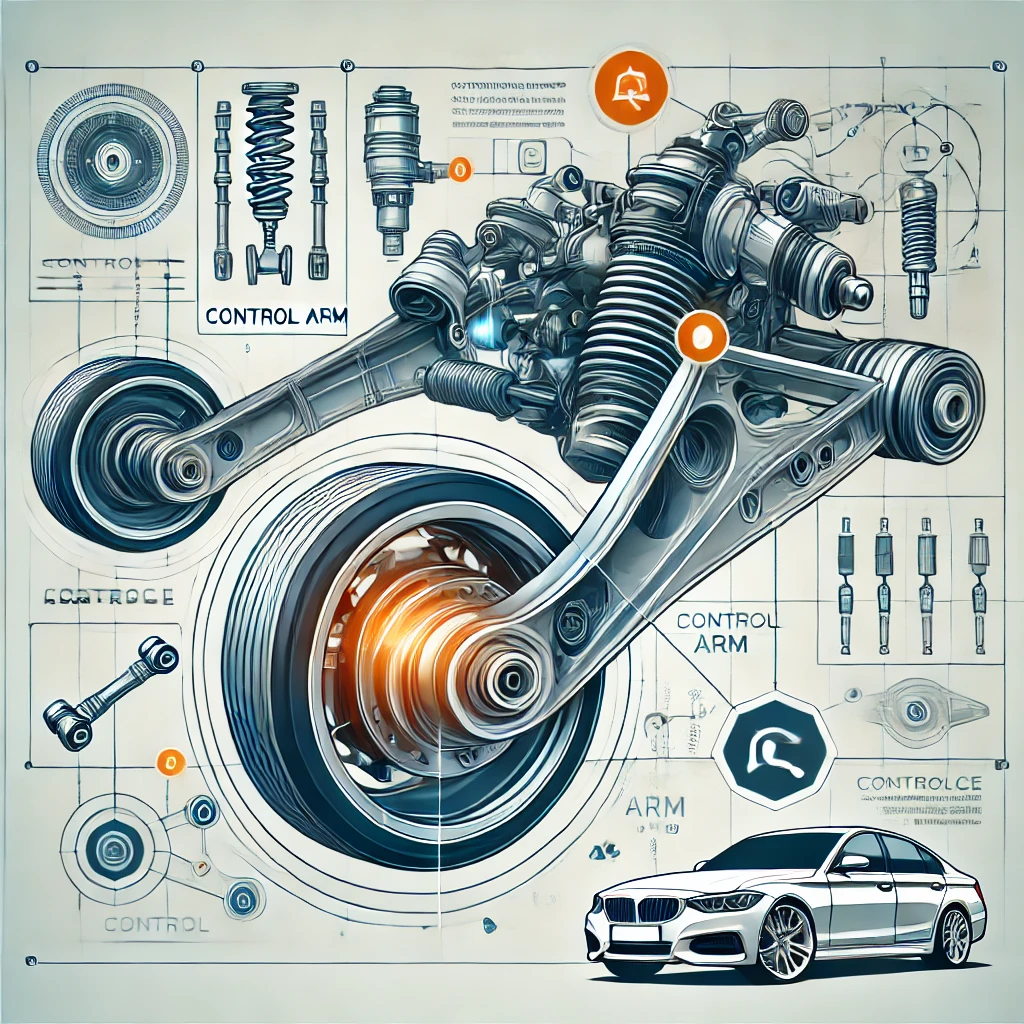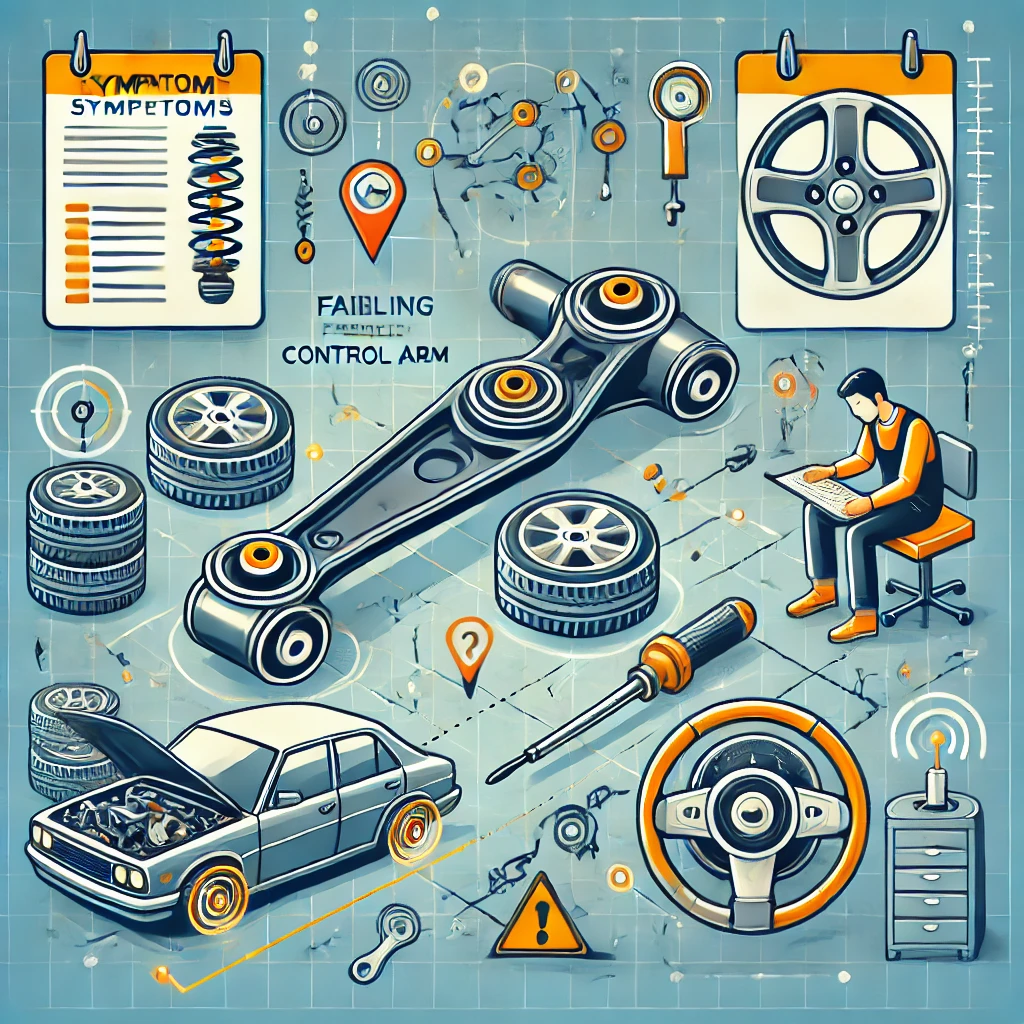Control arms are essential components of your vehicle’s suspension system, linking the chassis to the wheels and ensuring smooth handling. When a control arm goes bad, it can disrupt your vehicle’s stability, cause unusual noises, and lead to uneven tire wear. Understanding the symptoms, causes, and solutions is vital to maintaining your vehicle’s performance and safety.
What is a Control Arm?

A control arm serves as the connection between your car’s frame and the wheel hub. It allows your tires to move up and down while keeping them in proper alignment. Shaped like an “A” or “L,” control arms include bushings and ball joints that absorb road shocks and facilitate smooth wheel movement.
Types of Control Arms and Their Functions
Control arms come in two primary types:
- Upper Control Arms: Found in certain suspension systems, they assist in maintaining wheel alignment.
- Lower Control Arms: They bear the brunt of the load and connect the chassis to the lower wheel assembly.
Both types work together to ensure stability, handling, and tire contact with the road.
Symptoms of a Bad Control Arm
Bad control arms present several noticeable signs:
- Clunking Noises: Often heard when driving over bumps or making turns.
- Steering Issues: The vehicle may pull to one side or feel unstable.
- Uneven Tire Wear: Misaligned wheels lead to irregular tread patterns.
- Vibrations: Excessive shaking in the steering wheel, especially at high speeds.
- Wandering Alignment: Difficulty keeping the vehicle straight.
Ignoring these symptoms can lead to more severe problems.
Causes of Control Arm Failure
Control arms deteriorate due to several factors:
- Wear and Tear: Frequent use naturally degrades bushings and ball joints.
- Environmental Exposure: Rust, corrosion, and road salt weaken components.
- Driving Habits: Rough roads, potholes, and curbs can bend or damage control arms.
- Manufacturing Defects: Poor-quality materials or design flaws can shorten their lifespan.
The Role of Bushings and Ball Joints
Control arm performance heavily relies on bushings and ball joints:
- Bushings: Reduce friction and dampen vibrations but wear out over time.
- Ball Joints: Allow flexible movement and play a critical role in steering. Damaged ball joints compromise stability.
Risks of Driving with a Bad Control Arm
Driving with a faulty control arm poses serious risks:
- Reduced Stability: Handling becomes unpredictable, increasing the likelihood of accidents.
- Damage to Other Components: Failing control arms strain shocks, struts, and tires.
- Higher Costs: Ignoring repairs leads to escalating damage and expensive fixes.
Diagnosing Control Arm Problems
Identifying control arm issues early is crucial:
- Visual Inspection: Look for cracks, rust, or worn bushings.
- Test Driving: Pay attention to steering feedback and unusual noises.
- Professional Assessment: A mechanic can confirm and diagnose the problem.
Repair or Replace?

When dealing with a bad control arm, you may wonder whether to repair or replace it:
- Repair Options: Replacing bushings or ball joints can be cost-effective.
- Replacement Needs: Severe damage often requires a full control arm replacement.
Costs of Replacing a Control Arm
Replacement costs vary depending on the type and labor involved:
- Parts: OEM control arms range from $100 to $500, while aftermarket options start as low as $50.
- Labor: Professional replacement typically costs $200–$500.
- Alignment: A wheel alignment, costing $50–$100, is necessary post-replacement.
Preventing Control Arm Issues
Prolong the life of your control arms with these tips:
- Regular Maintenance: Inspect suspension components during routine checkups.
- Avoid Harsh Driving: Minimize impact with potholes and rough terrain.
- Rust Protection: Use undercoating to prevent corrosion.
Upgrading Control Arms
For enhanced performance, consider upgrading:
- Material Options: Aluminum and steel provide better durability.
- Performance Benefits: Aftermarket control arms improve handling and are ideal for off-road or high-speed applications.
Impact on Other Components
A failing control arm can affect the entire suspension system:
- Shocks and Struts: Increased wear and reduced efficiency.
- Tires: Accelerated tread wear due to misalignment.
- Steering System: Decreased precision and control.
Conclusion
A bad control arm can compromise your vehicle’s safety and performance. By recognizing the symptoms early, seeking professional diagnosis, and performing timely repairs or replacements, you can avoid costly damages and ensure a smooth, safe driving experience. Regular maintenance and quality replacements are investments in your vehicle’s longevity.
Why Choose Vib-eXpert for Your Control Arm Needs?
At Vib-eXpert, we specialize in premium suspension components, including control arms, bushings, and ball joints. Our products are engineered for durability, ensuring optimal performance for all vehicle types. Visit Vib-eXpert.com today to explore our range and experience unparalleled quality. For inquiries, contact our experts and let us assist you in finding the perfect solution for your suspension needs.
